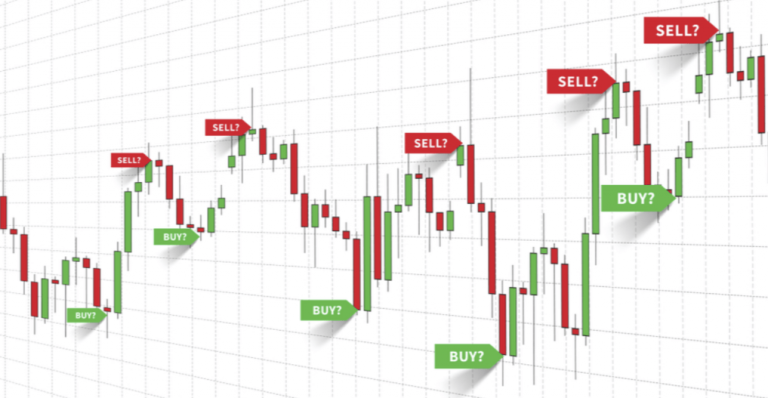Experience Trading
on the Go
on the Go

Many enter trading with misguided goals, unaware of the time and dedication it requires to reach consistency.
Although most experienced traders agree that using a demo platform, a simulated account, is time well spent, there is a divide concerning the length of time traders ought to commit to a demo account.
For this reason, acknowledging the differences between a demo and a live trading account is vital, in order to come to your own conclusion.
Offered for free by a trading provider, a MetaTrader 5 (MT5) demo account provides a simulated trading environment, tasked with the mission of emulating a live trading setting as closely as possible.
It is a practice account funded with virtual money, representing a stepping stone into trading.
As its name implies, live trading involves depositing real funds into the MT5 live trading account. Whether day trading, trading Forex or trading CFDs, a live account represents real money on the line. This is generally the next step after demo trading.
Dependent on the CFD/Forex broker you trade with, positions are predominantly executed in two of the following ways:
MT5 is an all-in-one trading platform, catering to a wide range of markets, including Forex (think currency pairs such as the EUR/USD and GBP/USD) and several other CFD products.
A demo account allows traders to familiarise themselves with a trading platform’s functionalities, a high-risk activity to engage in on a live trading account.
Testing a strategy on a demo is beneficial as the inherent risks of trading with real money are not present. Traders can comfortably test new strategies in a risk-free space.

Some traders believe testing a strategy on a demo account is akin to learning to drive.
Once you’ve passed your driving test, you have a framework to work with to operate a vehicle. Similarly, consistent results on a demo account, covering at least 30-50 trades, provides irreplaceable data in which to transition to live trading. You will know, given past performance (trading results from demo account trading), what to potentially expect.
However, there are still challenges.
Some MT5 demo accounts do not account for re-quotes and slippage, characteristics evident in a live trading environment. Also, price feeds between live and demo accounts can be an issue, as can spreads.
For those unaware, the difference between the price requested by the trader and the price the order is filled is known as slippage. A requote is similar. Rather than the broker filling the order at a different price, a notification is sent with the option of executing at the available price – the requoted price.
With FP Markets, our MT5 demo account offers the same price feed as its live MT5 account.
In addition to testing trading systems on demo accounts, simulated trading helps build discipline – the discipline to not only respect the rules of the trading strategy, but also the guidelines concerning money/risk management strategies. This is critical before stepping into a live trade. If you’re unable to adhere to rules in a simulated environment, the chances of respecting rules when trading live is zero.
Demo accounts aren’t just for new traders. Experienced traders also often employ the use of demo accounts to experiment with new strategies.
Trading live forces traders to experience the psychological issues all traders must face. Trading decisions made on demo accounts tend to be objective and unemotional. Throw a trader in a live trading situation, where decisions have consequences, and things usually change fast. The emotional attachment to wins and losses invariably affects trading decisions.
As you can see, there is only so far a demo account can take you. The psychological challenges must be confronted in order to progress.
The key difference between MT5 demo and a live account is the psychological impact.
Demo trades are unlikely to stimulate an emotional connection. Live trades are another matter entirely.
It’s often said you can give two traders the same trading strategy and equal starting account balances, and both traders would end up with completely different results. Psychology is important to understand. It can literally mean the difference between a winning trader and a loser.

Many traders are often left confused and frustrated in regards to trading results after transitioning to a live trading account, despite a successful demo account. While this may be due to a change in market conditions, it is largely a result of psychology. Losing one, two, or even three consecutive trades on a demo account is unlikely to produce a strong emotional reaction. But in live trading, a whirlwind of emotion is often experienced, occasionally leading to revenge trading.
Live trading essentially awakens fear and greed, while demo trading generally smothers these emotions. it is vital to try and learn to trade with discipline on a demo account, ultimately helping to make for a smoother transition when you’re ready to launch a real account.
The real test is when a trader shifts from MT5 demo account to MT5 live setting.
Whether a trader has the mindset capable of following a trading plan and handling the emotional strains of live trading will ultimately determine the trader’s success.
Armed with a tested trading strategy, it is tempting to go all-in on a live account in terms of an account balance. However, starting small is suggested. This gives the trader time to become accustomed to risk. Many consistently successful traders started small and gradually increased their account size as their trading progressed.
The priority is to develop discipline and trust in the rules and system. Do not panic if the first few trades do not work out as planned when live trading. Losses are a part of the business and should be expected.
Losing trades also provide valuable insight into both demo and live settings. Making mistakes is expected. Learning from these mistakes is essential for longevity in this business. This is where keeping a trading journal helps.
 Access 10,000+ financial instruments
Access 10,000+ financial instruments Auto open & close positions
Auto open & close positions News & economic calendar
News & economic calendar Technical indicators & charts
Technical indicators & charts Many more tools included
Many more tools included
By supplying your email you agree to FP Markets privacy policy and receive future marketing materials from FP Markets. You can unsubscribe at any time.
Source - database | Page ID - 1040